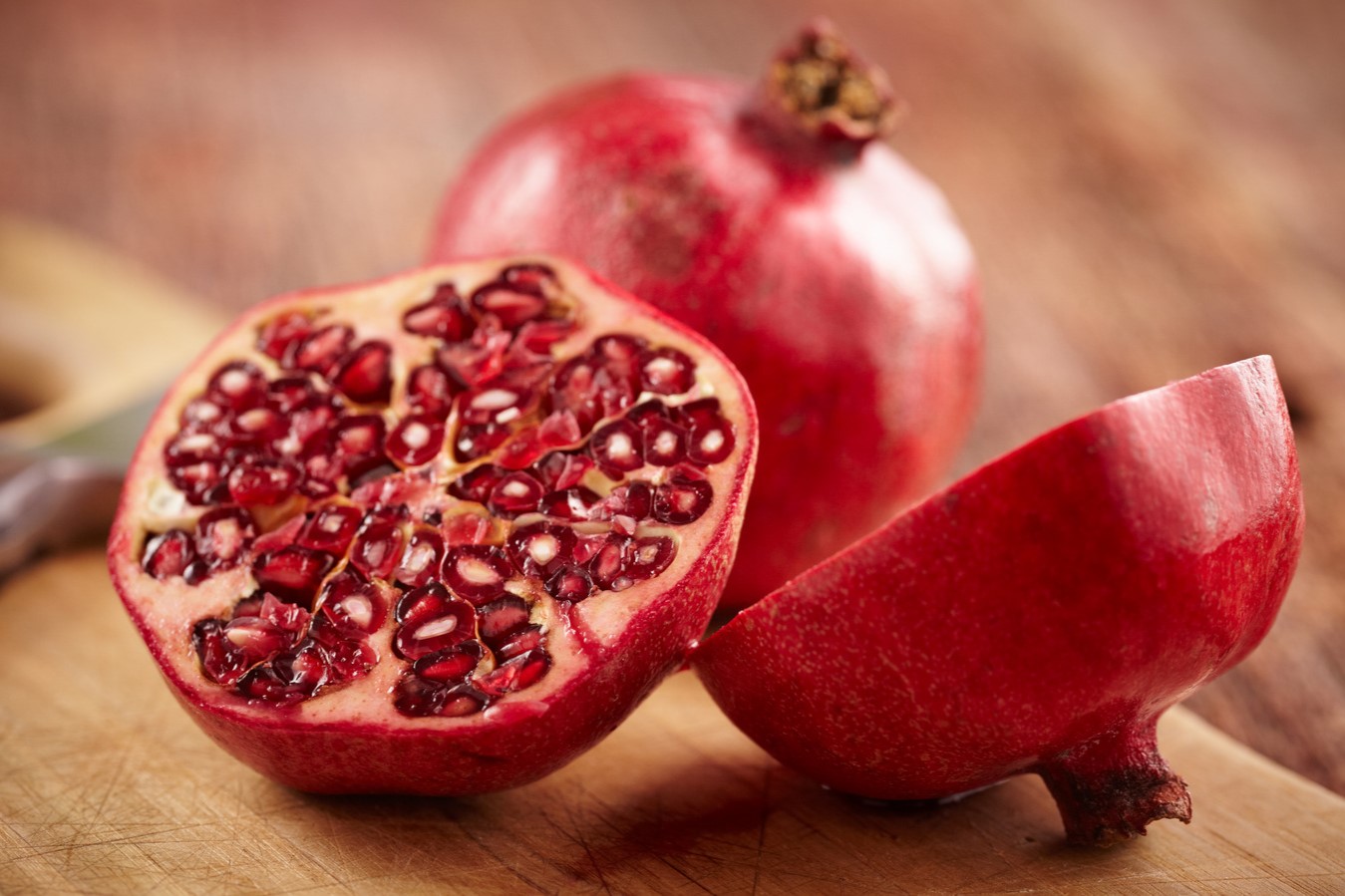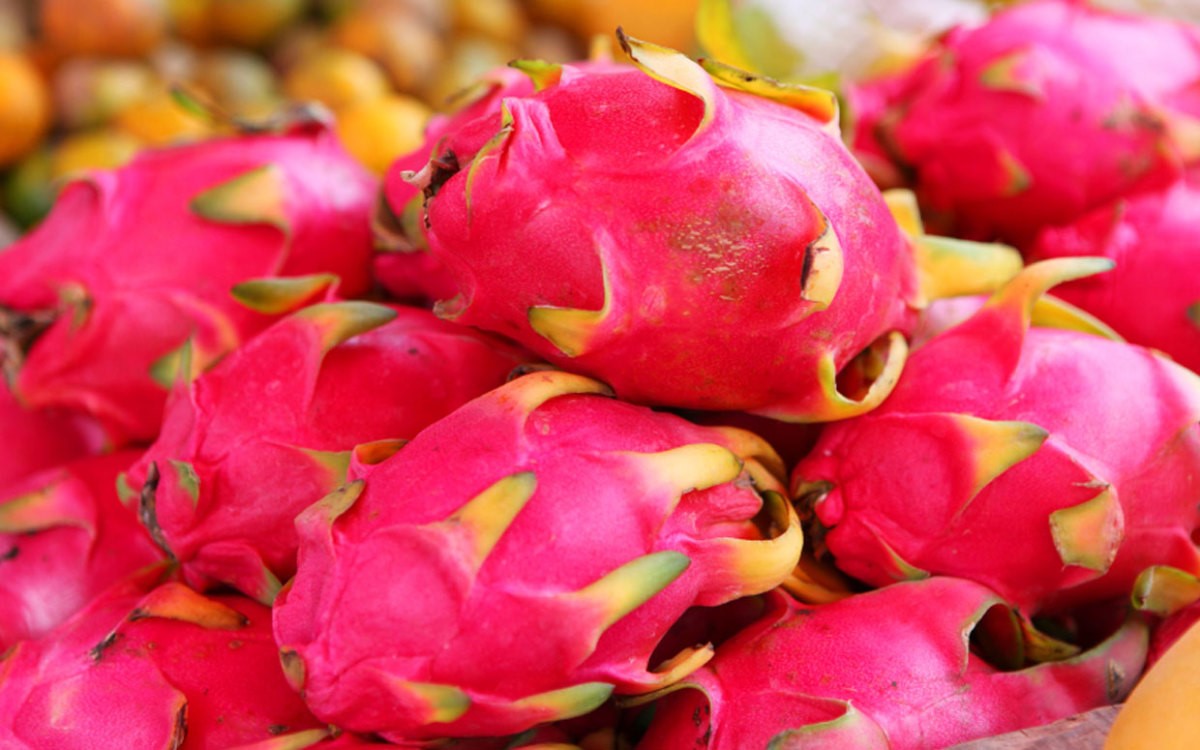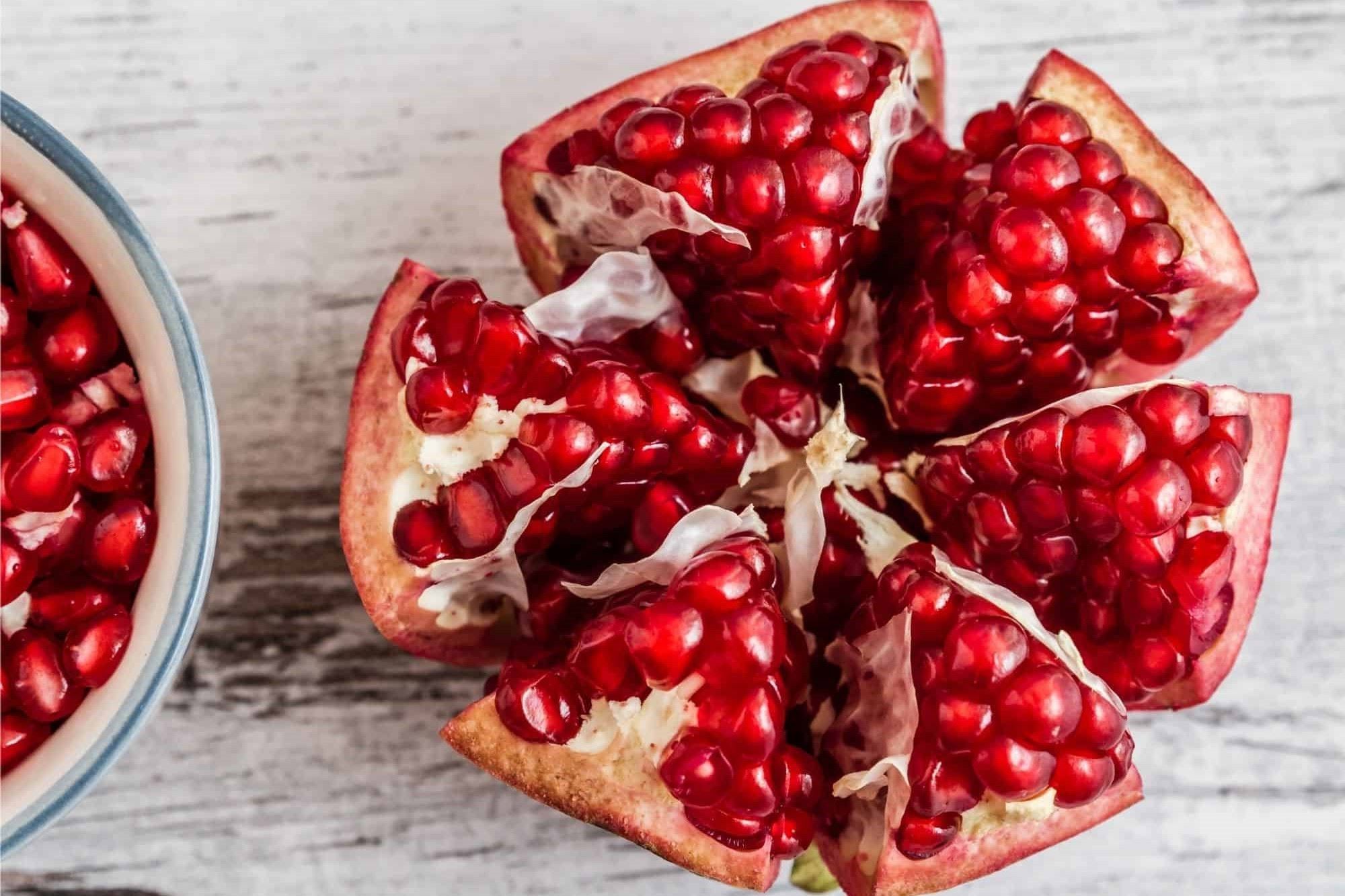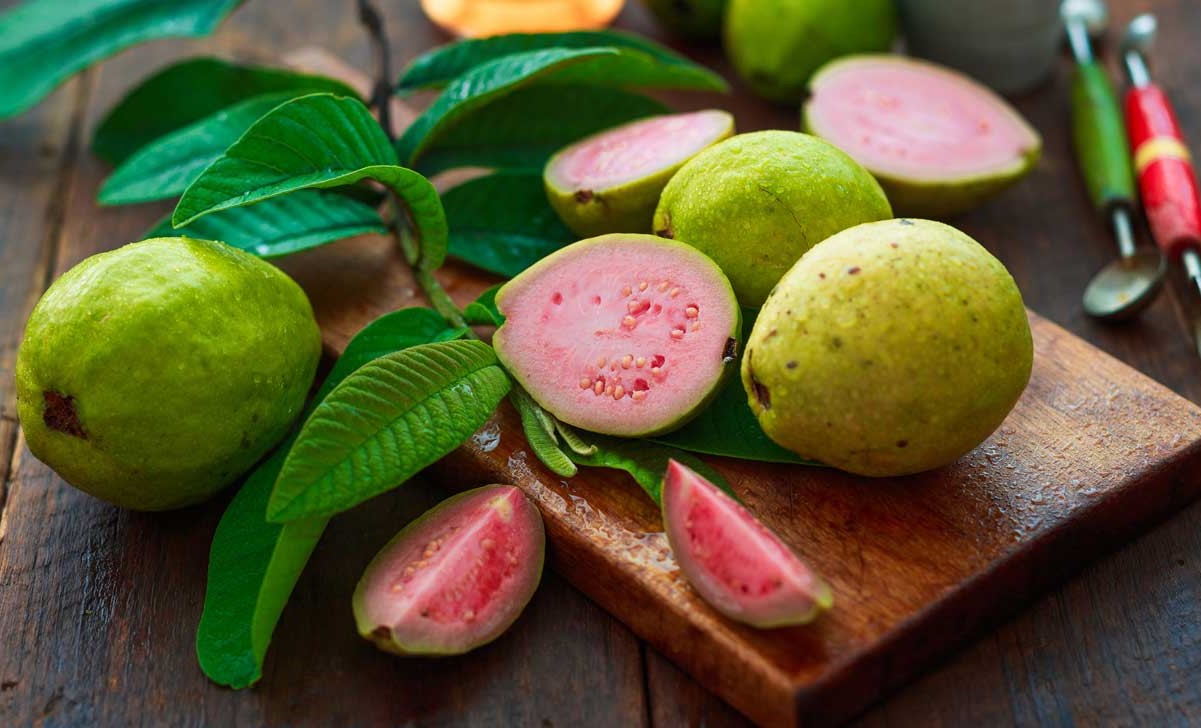Home>Food and Cooking>How To Tell When A Pomegranate Is Ripe


Food and Cooking
How To Tell When A Pomegranate Is Ripe
Published: February 28, 2024
Learn how to determine the ripeness of a pomegranate and enjoy its juicy, flavorful seeds with our expert food and cooking tips. Discover the best time to pick and savor this delicious fruit.
(Many of the links in this article redirect to a specific reviewed product. Your purchase of these products through affiliate links helps to generate commission for Noodls.com, at no extra cost. Learn more)
Table of Contents
Signs of a Ripe Pomegranate
Identifying a ripe pomegranate is essential for enjoying its sweet, juicy seeds and reaping the full nutritional benefits. When a pomegranate is ripe, it exhibits several key signs that indicate its readiness for consumption. Understanding these signs will help you select the best pomegranates and savor their delightful flavor.
-
Color: A ripe pomegranate typically displays a rich, deep color. When the fruit reaches its peak ripeness, its outer skin transforms into a vibrant shade of red or reddish-brown, depending on the variety. This intense coloration is a reliable indicator of the pomegranate's readiness to be enjoyed.
-
Weight: A ripe pomegranate feels heavy for its size. When you pick up a pomegranate, its weight should be substantial, signaling that the seeds inside are plump and filled with delicious juice. This weightiness is a clear indication of the fruit's ripeness.
-
Texture: Gently pressing the surface of a pomegranate can provide valuable insights into its ripeness. A ripe pomegranate should feel firm yet yielding to the touch. The skin should not be overly soft or excessively hard. This balanced texture indicates that the seeds inside have developed fully and are ready to be enjoyed.
-
Sound: When tapped or flicked, a ripe pomegranate produces a metallic, resonant sound. This distinct sound is a result of the seeds being fully developed and packed tightly inside the fruit. By listening for this characteristic sound, you can determine whether the pomegranate is ripe and bursting with flavorful seeds.
-
Crown Appearance: The crown, or the flower-shaped structure at the top of the pomegranate, provides valuable clues about its ripeness. As the pomegranate matures, the crown becomes drier and more brittle. A ripe pomegranate will have a dry, withered crown, signaling that the fruit is at its peak ripeness.
By familiarizing yourself with these signs of a ripe pomegranate, you can confidently select the best fruits and indulge in their delicious, nutrient-rich seeds. Incorporating ripe pomegranates into your diet not only adds a burst of flavor to your meals but also provides essential vitamins, antioxidants, and dietary fiber, contributing to your overall well-being.
Read more: How To Tell If A Honeydew Is Ripe
How to Check for Ripeness
When it comes to determining the ripeness of a pomegranate, employing a few simple techniques can help you make an informed decision. By paying attention to specific characteristics and using your senses, you can confidently assess whether a pomegranate is ripe and ready to be enjoyed.
Visual Inspection
Begin by visually examining the pomegranate. Look for a rich, deep color, as ripe pomegranates typically exhibit a vibrant shade of red or reddish-brown, depending on the variety. The color should be consistent across the entire surface of the fruit, indicating that it has reached its peak ripeness. Additionally, inspect the crown of the pomegranate – a dry, withered appearance signifies that the fruit is ripe and ready to be opened.
Weight Assessment
Next, assess the weight of the pomegranate. A ripe pomegranate feels heavy for its size, indicating that the seeds inside are plump and filled with flavorful juice. When you pick up a pomegranate, its weight should be substantial, providing a clear indication of its ripeness.
Texture Evaluation
Gently press the surface of the pomegranate to evaluate its texture. A ripe pomegranate should feel firm yet yielding to the touch. The skin should not be overly soft or excessively hard, signaling that the seeds inside have developed fully and are ready to be enjoyed.
Read more: How To Know When Kiwi Is Ripe
Sound Test
Perform a sound test by tapping or flicking the pomegranate. A ripe pomegranate produces a distinct metallic, resonant sound, indicating that the seeds are fully developed and packed tightly inside the fruit. By listening for this characteristic sound, you can determine whether the pomegranate is ripe and bursting with flavorful seeds.
Crown Examination
Lastly, examine the crown of the pomegranate. As the fruit matures, the crown becomes drier and more brittle. A ripe pomegranate will have a dry, withered crown, signaling that it is at its peak ripeness and ready to be opened to reveal its delicious seeds.
By incorporating these simple yet effective methods for checking the ripeness of a pomegranate, you can confidently select the best fruits and indulge in their delightful, nutrient-rich seeds. This attention to detail ensures that you experience the full flavor and nutritional benefits of ripe pomegranates, enhancing your culinary endeavors and promoting a healthy lifestyle.
Visual Indicators of Ripeness
Visual inspection serves as a fundamental method for determining the ripeness of a pomegranate. By carefully assessing its external appearance, you can gain valuable insights into the fruit's readiness for consumption. When conducting a visual examination, several key indicators can guide you in identifying a ripe pomegranate.
The color of a pomegranate is a prominent visual indicator of its ripeness. A ripe pomegranate typically exhibits a rich, deep color, signaling that it has reached its peak ripeness. Depending on the variety, the outer skin transforms into a vibrant shade of red or reddish-brown, reflecting the fruit's maturity. This intense coloration is a reliable indicator of the pomegranate's readiness to be enjoyed. When selecting pomegranates, look for fruits with a consistent, vivid color across their entire surface, as this signifies optimal ripeness.
In addition to color, the crown of the pomegranate provides valuable clues about its ripeness. As the fruit matures, the crown becomes drier and more brittle. A ripe pomegranate will have a dry, withered appearance at the crown, indicating that the fruit is ready to be opened and its delicious seeds enjoyed. By carefully examining the crown, you can discern whether the pomegranate has reached its peak ripeness, ensuring a delightful culinary experience.
By paying close attention to these visual indicators of ripeness, you can confidently select the best pomegranates and savor their delightful flavor. Incorporating ripe pomegranates into your culinary creations not only adds a burst of flavor to your dishes but also provides essential vitamins, antioxidants, and dietary fiber, contributing to your overall well-being. This visual assessment of ripeness enables you to make informed choices when selecting pomegranates, ensuring that you experience the full flavor and nutritional benefits of these exquisite fruits.
Other Methods for Determining Ripeness
In addition to visual inspection and sensory assessments, there are alternative methods for determining the ripeness of a pomegranate. These techniques provide additional insights that can aid in making an informed decision when selecting the best fruits for consumption.
One such method involves assessing the overall shape of the pomegranate. A ripe pomegranate typically exhibits a rounded, plump shape, indicating that the seeds inside have fully developed and are brimming with flavorful juice. Irregularities in the fruit's shape may suggest that it is not yet fully ripe, prompting further evaluation using other methods.
Another approach involves evaluating the skin of the pomegranate. A ripe pomegranate should boast a glossy, lustrous exterior, signaling that the seeds inside are succulent and bursting with flavor. The presence of any blemishes or dullness on the skin may indicate that the fruit is not yet at its peak ripeness, prompting a closer examination of other ripeness indicators.
Furthermore, some individuals prefer to use the "taste test" method to determine the ripeness of a pomegranate. By sampling a few seeds from the fruit, one can gauge their sweetness and overall flavor profile. Ripe pomegranate seeds are known for their delightful sweetness and juicy texture, providing a satisfying sensory experience. However, it's important to note that this method may not be suitable for everyone, as some individuals may prefer to consume only fully opened and visually inspected pomegranates.
Additionally, the aroma of a pomegranate can offer valuable clues about its ripeness. A ripe pomegranate emits a subtle, sweet fragrance, indicating that it is ready to be enjoyed. By gently sniffing the fruit, one can detect the presence of this inviting aroma, further confirming its readiness for consumption.
By incorporating these alternative methods for determining ripeness, individuals can enhance their ability to select the best pomegranates and indulge in their delightful, nutrient-rich seeds. These additional techniques complement visual and sensory assessments, providing a comprehensive approach to evaluating the ripeness of pomegranates and ensuring a rewarding culinary experience.














